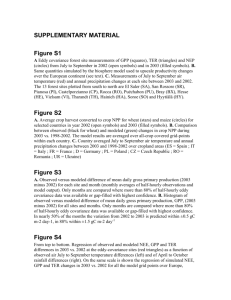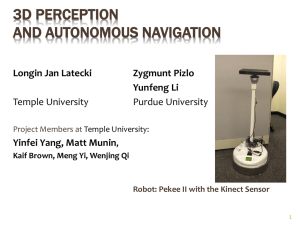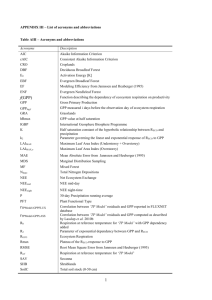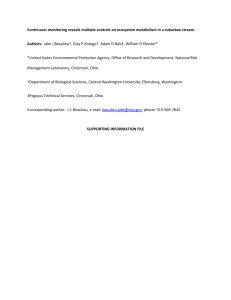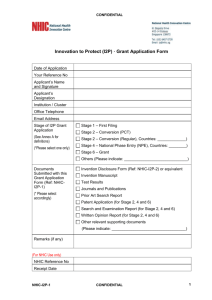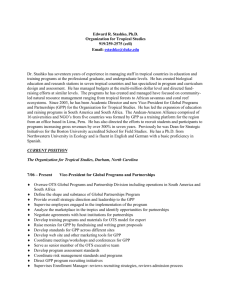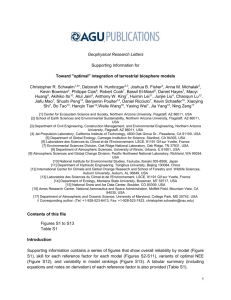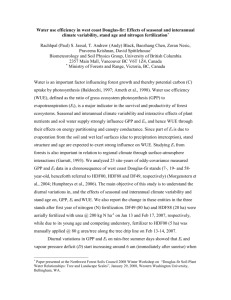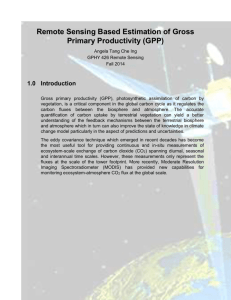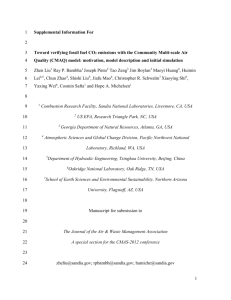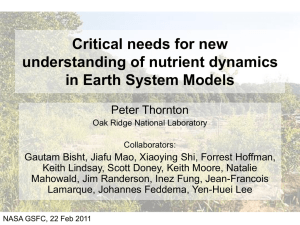2013_Feb04_PM_Huntzinger_207
advertisement
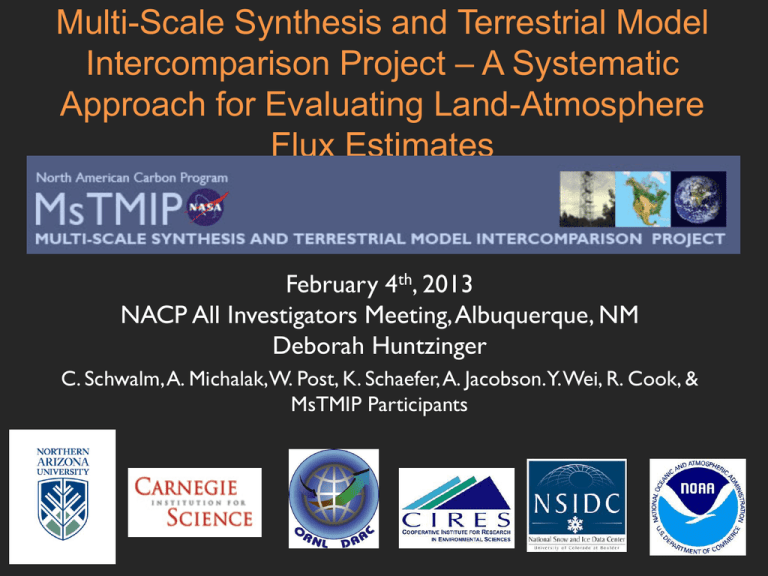
Multi-Scale Synthesis and Terrestrial Model Intercomparison Project – A Systematic Approach for Evaluating Land-Atmosphere Flux Estimates February 4th, 2013 NACP All Investigators Meeting, Albuquerque, NM Deborah Huntzinger C. Schwalm, A. Michalak, W. Post, K. Schaefer, A. Jacobson.Y. Wei, R. Cook, & MsTMIP Participants Future projections depend, in part, on ability to model land-atmosphere carbon exchange Huntzinger et al. (2012) Ecological Modeling Friedlingstein et al. 2006 Land surface Models Input data Initial conditions Parameter values Assumptions Process inclusion & formulation Understanding of system / Policy and management choices How do intermodel differences influence variability or uncertainty in model results? Parametric uncertainty Input data Initial conditions Parameter values Assumptions Process inclusion & formulation Structural uncertainty: In order to quantify, need: • Large community of models • Strict simulation protocol Multi-scale Synthesis & Terrestrial Model Intercomparison Project (MsTMIP) Unique in several ways: • Two spatial scales: Global (0.5° by 0.5°); North America (0.25° by 0.25°); • Two distinct sets of standardized environmental input data – Climate, land cover & land-use/land-cover change history, phenology, atmospheric CO2, nitrogen deposition rates, soil, C3/C4 grass, major crops • Includes over 20 different TBMs • 110-year simulation period (1901-2010) • 10 different simulations model to assess sensitivity to different forcing factors • Evaluation of model performance against available observations (benchmarking) MsTMIP Simulations: Global Reference simulations spin-up run out to 2010 Order Domain 1 2 Global Code Climate RG1 Constant SG1 3 SG2 4 SG3 5 BG1 Time-varying (CRU+NCEP) LULUC Constant Timevarying (Hurtt) Atm. CO2 Constant Timevarying Nitrogen Constant Time-varying Sensitivity simulationsmodel’s turn one variable component on at a time to carbon Baseline simulations best estimate of net land-atmosphere systematically test the impact flux (everything turned on) of climate variability, CO2 fertilization, nitrogen Changing land-use, land-cover, CO2 concentrations, nitrogen deposition rates, etc. limitation, and land cover / land-use change on carbon exchange. 1801 1901 1980 2010 Start with steady-state initial conditions Start monthly output Start 3-hourly output Stop MsTMIP experimental design represents a set of collective hypotheses: – Strict protocol isolate sources of differences – Similar structural characteristics similar estimates of fluxes, carbon pools, etc. – Sensitivity to forcing factors will differ among models Does strict protocol help to isolate sources if different in model output? Range Interquartile range Median NACP Regional Interim Synthesis vs. MsTMIP Mean GPP for North America (2000-2005) 5 models (CLM, DLEM, LPJ, ORCHIDEE, VEGAS) Huntzinger et al., (2012) GMD in prep. MsTMIP models Steady-state results 10 models Range Interquartile range Median • GPP varies by factor of 2 in tropics • Soil carbon pool size in NHL ranges from 5 – 60 kg C m-2 • Total living biomass varies by factor of 3.5 in tropics Huntzinger et al., (2012) GMD in prep. “Best estimate” (1982 -2010) Range Interquartile range Median Total living biomass 9 models (BIOME-BGC, CLM, CLM4ViC, DLEM, LPJ, ORCHIDEE, TRIPLEX-GHGm, VEGAS, VISIT) “Hot spots” of interannual variability (IAV) (1982-2010) Map highlights areas where the models show the greatest degree of interannual variability (IAV) 75% 90% 95% Compare simulated GPP to other GPP products: MODIS-GPP (Zhao and Running, 2010) MPI-BGC (Jung et al., 2011) MsTMIP experimental design represents a set of collective hypotheses: – Strict protocol isolate sources of differences – Similar structural characteristics similar estimates of fluxes, carbon pools, etc. – Sensitivity to forcing factors will differ among models Need to identify models that share similar characteristics Visualizing model structural differences using dendrograms Huntzinger et al., (2012) GMD in prep. Do models with similar structural characteristics will have similar estimates of flux? Mean global GPP (1982-2010) Overall model structural differences Model sensitivity to different environmental drivers Global Net GPP Change in GPP (relative to SS) with each simulation Dynamic Land Ecosystem Model (DLEM) Nitrogen dynamics Time-varying atmospheric CO2 Time-varying climate Land-use, land-cover change history (DLEM) Additive change in GPP attributed to different forcing factors N-cycling Atm. CO2 LULCC Climate Model sensitivity to different environmental drivers (19822010) Summary and what’s next • We can evaluate model results in a way that was not possible with the NACP regional synthesis activity: – Attribute inter-model variability to structural differences – Quantify sensitivity of models (and their estimates) to forcing factors • Model-data evaluation (benchmarking) is currently underway. Will evaluate model performance as a function of: – Domain (Site, North America, Global) – Spatial and temporal resolution of driver data • MsTMIP workshop following meeting Acknowledgements • Funding for MsTMIP: – NASA Terrestrial Ecology Program Grant No. NNX10AG01A – NOAA • Data/model output management and processing – MAST-DC and ORNL DAAC • MsTMIP modeling teams: – John Kim (BIOMAP); Weile Wang (Biome-BGC ); Altaf Arain (CLASS-CTEM-N+); Dan Hayes (CLM and TEM6); Mayoi Huang (CLM4-VIC); Hanqin Tian (DLEM); Dan Riccuito (GTEC); Tom Hilinksi (IRC/DayCent5); Atul Jain (ISAM); Ben Poulter (LPJ); Dominique Bachelet (MC1); Josh Fisher (JULES, ORCHIDEE, SIB3, Shushi Peng and Gwenaelle Berthier (ORCHIDEE); Kevin Schaefer (SiBCASA); Rob Braswell (SIPNET); Chanqhui Peng (TRIPLEX-GHG); Ning Zeng (VEGAS); Akihiko Ito (VISIT)
